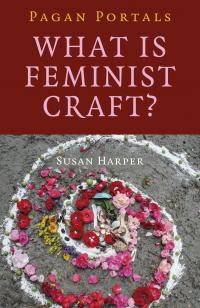
 March in the Wheel of the Year Part 2: Lenten Times, Spring Equinox & Earth Hour - By Lucya Starza
March in the Wheel of the Year Part 2: Lenten Times, Spring Equinox & Earth Hour - By Lucya Starza
It’s Lent. That’s usually thought of as a Christian prelude to Easter, but it wasn’t always just that. In fact, it might have originally meant the time of year when days lengthen – and could be celebrated by anyone, pagans included.
In The Stations of the Sun, Professor Ronald Hutton writes that in the first recorded mention, in an early eleventh century Anglo-Saxon text, “the word ‘lenten’ had dual meaning of the season of spring and the major annual Christian fast. It seems to derive simply from the ‘lengthening’ of the daylight.” He adds that it also combined joy with abstinence. So, you don’t have to be Christian to get in the lenten spirit, which means enjoying warmth, light and the return of flowers and greenery, but also appreciating that there isn’t yet much fresh food in season.
Vegan Weeks
Meat would have been in very short supply. A traditional diet would have been pretty much vegan veg and beans during Lent in historic times, even if the Church hadn’t stipulated it. That idea can be revived by anyone wanting to reduce their meat and dairy consumption for ethical, environmental or spiritual reasons today, especially for those working with the natural seasons in a spiritual sense. My own personal view is that this is a better time for vegan weeks than January.
The Spring Equinox
The next festival in the modern pagan Wheel of the Year is the Spring Equinox. It’s on Sunday 20 March this year. For most modern pagans it’s a time to celebrate springtime and all that means. That can include going outdoors to enjoy the sight of flowers blooming and buds forming, planting seeds (both real and metaphorical), and acknowledging the increasing light and warmth. It’s also a festival associated with balance because it’s when day and night are roughly equal length and is positioned between summer and winter. Both hemispheres of the Earth have the same amount of daylight, although it is Autumn Equinox in the Southern Hemisphere.
This can be done at both equinoxes to help get more balance in life. All you need is a notebook, a pen and two candles of different colours to represent day and night or summer and winter. You light the candles then sit down with your notebook and make two lists; one of things you want to make more time for in your life and the second of things you want to spend less time doing. Keep the lists to look at again to remind yourself of your wishes. This is one of the spells in my book Pagan Portals - Candle Magic.
Easter Connections
The Spring Equinox is always shortly before Easter. In fact, the Christian festival of Easter falls on the first Sunday after the full moon following the time of balance because Christ’s crucifixion took place after Jewish Passover. Easter wasn’t deliberately plonked on top of an ancient pagan festival. However, the reason it got the name is a little stranger, and possibly might have some pagan origins. Professor Hutton writes:
“On the face of it, the issue ought to have been solved by Bede in the early eighth century…. He declared that the name had derived from that of a goddess, Eostre, after whom the month in which Easter fell had been dubbed the “Eostur”-month.”
Although many modern pagans honour the Goddess Eostre at this time, academics have debated whether that designation is historically accurate. Bede wasn’t always correct and it’s possible the Anglo-Saxon word ‘eastre’ was more to do with the season of spring itself rather than a specific goddess, or related to a goddess of the dawn, perhaps like Eos, instead of a goddess of that time of year.
Professor Hutton writes that there isn’t much evidence for a pre-Christian festival around the Spring Equinox. Nevertheless, while pre-Christian farmers might have been too busy sowing seeds to celebrate, it’s also possible older customs got lost or merged into Christian ones. We don’t know, but we can imagine what might have taken place or create modern-day pagan rituals full of the joys of springtime.
Earth Hour
Every year after the Spring Equinox is Earth Hour. People all over the world turn off non-essential electric lights for an hour to symbolise their commitment to the planet. It takes place from 8.30pm on a Saturday at the end of March. Although organised by the World Wildlife Fund, it is a grassroots event and perfect to adopt for pagan ceremonies. Light a candle and make a dedication to do more for the environment. Do spells to protect wildlife and endangered habitats. Say words in honour of Gaia, Mother Nature, or any deity of protection for the Earth.
This is part of a series of posts I’m writing for the Moon Books Blog on the theme of the Wheel of the Year. They will be compiled and edited into a book: Pagan Portals – Wheel of the Year. Other books by Lucya Starza in the Pagan Portals series include Candle Magic, Guided Visualisations, Poppets and Magical Dolls, and Scrying. Lucya edited the community book Every Day Magic – A Pagan Book of Days.
Categories:
0 comments on this article







